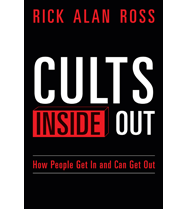Why conspiracies are so popular—and what we can do to stop them
Published By admin
Even in the face of overwhelming evidence, false narratives can be incredibly sticky. Many people insist that the earth is flat, that childhood vaccines cause autism, or that climate change is a hoax, despite ample scientific evidence to the contrary.
“Stories are very powerful,” said Timothy Tangherlini, a UC Berkeley professor in the Department of Scandinavian and the School of Information. “We’re much more comfortable with hearing stories that confirm our beliefs than ones that challenge them.”
Tangherlini sees narratives like these, and the many other conspiracies that are rife in today’s internet culture, as a type of modern-day folklore. As a computational folklorist, he uses AI tools to study how social media networks have accelerated the spread of conspiracies and false beliefs, and what, if anything, we can do to slow them down.
Following an election cycle dominated by conspiracies and hoaxes—from elites controlling the path of hurricanes, to 20 million missing votes for Kamala Harris and immigrants eating people’s pets—Tangherlini’s work is more relevant than ever. Berkeley News spoke with Tangherlini about why conspiratorial thinking has flourished in recent years and how we might spread stories of inclusion and truth that are powerful enough to stem the tide of false belief.
What motivated you to study conspiracy theories through the lens of folklore and storytelling?
I think of conspiracy theories as narrative constructs, as fictional. And they can be very powerful because they are stories. Narratives are very efficient at encapsulating norms, beliefs and values—and when we tell them over and over, they get pared down to the most efficient kernel of narrative weight.
These belief narratives—stories that we tell each other that we believe to be true—can influence belief, and these beliefs then create a feedback mechanism, so that once you’ve got a belief, it’s very hard to change it. You start to seek out narratives that confirm your beliefs.
I’m particularly fascinated by the fact that so many of these stories wind up being about outside threats. Often, it’s the Ghostbusters question: When ghosts appear in the neighborhood, who are you going to call? Or, how are we going to deal with some sort of threat to the integrity of our community?
These threats can then force real world action, an example of which we saw with the Jan. 6, 2021, U.S. Capitol attack. The question becomes: How do you interrupt these kinds of narratives when they start to have a significant impact on democratic institutions and civil society?
We’re living in a world that seems rife with conspiracy theories. What is it about our current society that makes it so prone to conspiracies?
We as humans tend to surround ourselves with people who have similar beliefs, and we also align our beliefs with the people around us. You might believe things, but you want to be part of the group, so you adjust your beliefs—you negotiate the boundaries of belief.
This process has been profoundly interrupted by the advent of social media. The groups that we interact with online are no longer the close, homogeneous groups that we are used to and were socialized in, so the social brakes that used to be there have come off, and the speed and directionality of messaging has changed magnitude—things can get out much faster.
People have also worked really hard to erode our trust in the media. We used to have newspapers of record, like the New York Times or the LA Times. You might not have agreed with their opinions, but you could trust the underlying reporting.
Now there’s been a concerted effort to challenge the underlying reporting itself. And with the advent of generative AI, it’s also possible to generate not only audio recordings but also visual recordings—deep fakes—and newspaper articles that give the illusion of being true, but really aren’t.
Content retrieved from: https://phys.org/news/2025-02-conspiracies-popular.html.






